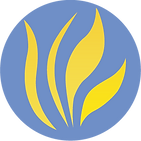Learning from the Master of Old
- FCSH Team
- Jul 22, 2024
- 2 min read
“Our Father, who art in heaven”
--King James English translation from Latin
“Abwun d’bashmaya”
--Aramaic transliteration
“O Birthing! Father-Mothering of the Cosmos,
creating all that moves in light and sound.”
--English translation of Aramaic
These are the first words of “The Lord’s Prayer,” when Jesus of Nazareth’s
disciples asked him how to pray. In Aramaic, the word for “prayer,” “meditation,”
and “contemplation” are the same. So, originally the Lord’s prayer was all of
those—a prayer, meditation, and contemplation.
Lately, I have been learning about Jesus’ teachings that were spoken in Aramaic.
Although he must have known Hebrew from growing up in a Jewish family and
Latin while living under the Roman occupation of his homeland, he spent most of
his time with the peasants living in Galilee, which is in the northern part of the
Hebrew. It was populated with many poor people, some Samaritans, who had lost
track of many of the Judean temple practices. These people spoke Aramaic, a
language that is spoken by only a few people living in the current Iraq-Syria
region today.
The Aramaic worldview of Jesus’ day was very different from our English-
speaking, Western worldview. Aramaic is one of the Semitic Middle Eastern
language and lifestyle groups, which includes the languages and lifestyles of the
Hebrews, Arabs and Canaanites. The early Semitic world was connected to the
rhythms of nature. People lived in tune with the vibrational patterns of life that
were quite different from our current scientific understanding and patterns of
reality.
In the Western worldview, people generally separate nature from human life. We
separate the spiritual and mental aspects of our lives from our material and
physical selves. We even separate ourselves from each other, and, of course,
God, our Creator. We believe and act as though God is in heaven and humans
are on earth. That was not the case with the Middle Eastern understanding of
reality. Aramaic-speaking people experienced life more unified. They recognized
their individual lives as individual breathing (“naphsha”) beings who were
connected to the universal breath (“ruha”). This “ruha” is the Aramaic word for
the Hebrew word “ruah” that “hovered over the waters” in the Genesis’ creation
story.
Jesus taught that “ruha,” that creative life force of the universe, that pervades all
of reality is united with the life force (“naphsha”) in each human being. This is
similar to Sankhya Yoga’s understanding of our individual “prana” being united
with the Universal Prana, Ishwara. All of life is a continuum of breath throughout
all of creation.
So, when Jesus taught his Aramaic-speaking disciples how to pray, he taught
them how to connect with the Universal Life Breath, not a father figure. He taught
his disciples how to make that connection within themselves and not imagine
that the Universal, Creative Life Force was separate from them, but was actively
one with their own individual selves. Yoga calls this uniting the small, ego self
with the higher Self, called atman.
The implications of this Aramaic way of understanding Jesus’ teachings are quite
profound and quite beyond the current non-Middle Eastern understanding of God.
I’d like to pursue those implications more next time.
I bow to the divinity within

Comments